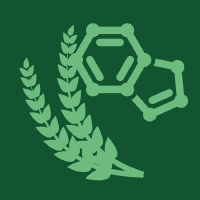Topic Editors



Dietary Carbohydrate Chemistry, Nutrition, and Utilization
Topic Information
Dear Colleagues,
The topic issue “Dietary Carbohydrate Chemistry, Nutrition, and Utilization” focuses on the essential role of carbohydrates in human health and their diverse impacts. This issue invites submissions exploring the balance between glycemic and non-glycemic carbohydrates, emphasizing their implications for food production, gut health, and long-term well-being. Key areas of interest include the chemistry, digestion, and health benefits of carbohydrates such as resistant starch, human milk oligosaccharides, beta-glucans, and other non-starch polysaccharides. We welcome manuscripts addressing carbohydrate metabolism, glycemic response mechanisms, prebiotic effects, and innovative approaches to utilizing carbohydrates in food systems. Research on carbohydrate structure–function relationships, in vitro and clinical investigations, and their role in preventing and managing diseases is particularly encouraged. This issue aims to provide a comprehensive resource for researchers, nutritionists, dieticians, and food scientists advancing knowledge of carbohydrate nutrition and its application in promoting human health. We look forward to your valuable contributions to this exciting field.
Prof. Dr. Bin Zhang
Prof. Dr. Lijun Sun
Dr. Zhuqing Xie
Topic Editors
Keywords
- carbohydrate chemistry
- glycemic and non-glycemic carbohydrates
- resistant starch and prebiotics
- carbohydrate metabolism
- colonic fermentation and gut health
Participating Journals
| Journal Name | Impact Factor | CiteScore | Launched Year | First Decision (median) | APC | |
|---|---|---|---|---|---|---|

Dietetics
|
- | - | 2022 | 42.5 Days | CHF 1000 | Submit |

Foods
|
4.7 | 7.4 | 2012 | 14.5 Days | CHF 2900 | Submit |

Nutrients
|
4.8 | 9.2 | 2009 | 13.5 Days | CHF 2900 | Submit |

Preprints.org is a multidisciplinary platform offering a preprint service designed to facilitate the early sharing of your research. It supports and empowers your research journey from the very beginning.
MDPI Topics is collaborating with Preprints.org and has established a direct connection between MDPI journals and the platform. Authors are encouraged to take advantage of this opportunity by posting their preprints at Preprints.org prior to publication:
- Share your research immediately: disseminate your ideas prior to publication and establish priority for your work.
- Safeguard your intellectual contribution: Protect your ideas with a time-stamped preprint that serves as proof of your research timeline.
- Boost visibility and impact: Increase the reach and influence of your research by making it accessible to a global audience.
- Gain early feedback: Receive valuable input and insights from peers before submitting to a journal.
- Ensure broad indexing: Web of Science (Preprint Citation Index), Google Scholar, Crossref, SHARE, PrePubMed, Scilit and Europe PMC.

